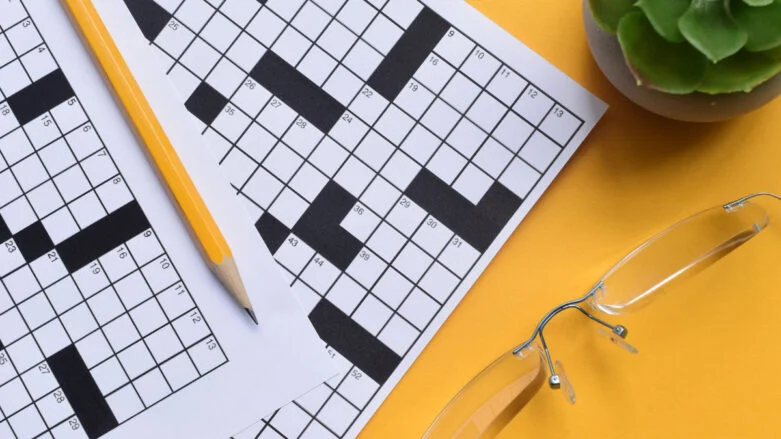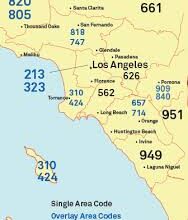Definition of ‘Lead In To Lingo’

Introduction
Curious about the mysterious phrase “lead in to lingo” that often pops up in crossword puzzles? Wondering how mastering this phrase could enhance your language skills and puzzle-solving abilities? Look no further! In this article, we’ll delve into the definition of “lead in to lingo” and explore its significance in both crossword puzzles and everyday language. Whether you’re a seasoned puzzler or just starting out, understanding this concept is key to unlocking a world of linguistic challenges and rewards. So, let’s dive in and uncover the secrets behind “lead in to lingo”!
Understanding the Basics
When it comes to mastering the art of solving crossword puzzles, understanding the basics is crucial. One fundamental concept that often stumps beginners is the idea of the “lead in to lingo.” So, what exactly is a lead-in word? In the context of crossword puzzles, a lead-in word serves as a clue or hint that leads to the solution of the puzzle. It sets the stage for the answer by providing context or direction.
Identifying the lead-in word is the first step towards solving a crossword puzzle efficiently. It’s like deciphering a code – once you crack the lead-in word, the rest of the puzzle starts to fall into place. But how do you identify the lead-in word amidst a sea of letters and clues? One strategy is to look for words or phrases that hint at the theme or subject matter of the puzzle. These can include common expressions, idioms, or even specific language patterns that indicate a certain theme.
Consideration of the context is equally important when deciphering the lead-in word. Pay attention to the clues provided in the puzzle and think about how they relate to each other. Is there a common thread that ties them together? Are there any recurring themes or motifs? By analysing the context carefully, you can narrow down the possible interpretations of the lead-in word and increase your chances of finding the correct solution.
Thinking at a beginner’s level is also key to mastering the lead-in to lingo. Instead of overthinking or overanalyzing the clues, try to approach them with a fresh perspective. Sometimes, the simplest explanation is the correct one. Don’t be afraid to trust your instincts and go with your gut. Remember, practice makes perfect, and the more you engage with crossword puzzles, the better you’ll become at identifying and deciphering lead-in words.
Solving Crossword Puzzles
Solving crossword puzzles can be both challenging and rewarding, and understanding the lead-in to lingo is a key component of success in this endeavor. To tackle these puzzles effectively, it’s important to have a few strategies up your sleeve.
Firstly, let’s delve into some tips to solve lead in to lingo crossword puzzles. One effective strategy is to start by scanning the clues for any words or phrases that stand out as potential lead-in words. These clues often provide hints about the theme or subject matter of the puzzle, giving you valuable insight into where to begin.
Once you’ve identified a potential lead-in word, it’s time to consider the context. Take a closer look at the surrounding clues and try to discern any patterns or connections between them. This can help narrow down the possible interpretations of the lead-in word and guide you towards the correct solution.
When tackling lead in to lingo crossword puzzles, it’s also helpful to think at a beginner’s level. Instead of overcomplicating things, approach the clues with a simple and straightforward mindset. Sometimes, the answer is right in front of you, waiting to be discovered.
Consulting crossword reference materials can also be beneficial when solving lead in to lingo puzzles. Whether it’s a crossword dictionary, an online solver tool, or a trusted crossword-solving guide, having access to additional resources can provide valuable assistance when you find yourself stuck.
Enhancing Vocabulary and Language Skills
Understanding the concept of “lead in to lingo” not only helps with solving crossword puzzles but also plays a significant role in enhancing vocabulary and language skills. By exploring common examples of lead in to lingo and how they are used in everyday language, individuals can expand their linguistic repertoire and improve their communication abilities.
Common examples of lead in to lingo include phrases such as “speaking of which,” “on that note,” “anyway,” “back to the topic at hand,” and “all this to say.” These phrases serve as transitional markers that signal a shift in topic or direction in conversation or writing. By incorporating these phrases into your speech and writing, you can create smoother transitions between ideas and maintain coherence and cohesion in your communication.
Moreover, understanding and utilizing lead in to lingo can help individuals become more adept at recognizing and interpreting subtle nuances in language. By paying attention to the context in which these phrases are used, individuals can gain insights into the underlying meaning and intent behind the words. This heightened awareness of language nuances can enhance both comprehension and expression skills, enabling individuals to communicate more effectively in various contexts.
Additionally, mastering lead in to lingo can contribute to the development of critical thinking and analytical skills. When solving crossword puzzles, individuals must not only decipher the lead-in word but also analyze the clues and context to arrive at the correct solution. This process of problem-solving requires logical reasoning, pattern recognition, and the ability to draw connections between disparate pieces of information – all of which are valuable skills that can be applied beyond the realm of crossword puzzles.
The NYT Crossword Experience
The New York Times crossword puzzle is renowned for its challenging clues, clever wordplay, and rich cultural references. As one of the most prestigious crossword puzzles in the world, it offers enthusiasts a unique and intellectually stimulating experience. Understanding the history and significance of the NYT crossword can provide valuable insights into why it holds such a special place in the hearts of puzzle aficionados.
The history of the NYT crossword dates back to 1942 when the first puzzle appeared in the newspaper’s Sunday edition. Since then, it has become a beloved tradition for millions of puzzle enthusiasts around the world. Over the years, the NYT crossword has evolved and adapted to reflect changes in language, culture, and society, making it a timeless and enduring source of entertainment and intellectual challenge.
What makes the NYT crossword special is its distinctive blend of wit, sophistication, and cultural relevance. Each puzzle is meticulously crafted by skilled constructors who draw upon a vast array of themes, trivia, and wordplay techniques to create an engaging and satisfying solving experience. From literary references to pop culture allusions, the NYT crossword offers something for everyone, regardless of age or background.
More than just a puzzle, the NYT crossword has become a cultural phenomenon in its own right. It has inspired countless books, documentaries, and even a feature-length film, highlighting its enduring popularity and influence. For many enthusiasts, solving the NYT crossword is not just a pastime but a cherished ritual that fosters camaraderie, creativity, and intellectual stimulation.
Benefits of Solving the NYT Crossword:
- Mental Stimulation: Solving crossword puzzles, particularly ones as challenging as the NYT crossword, provides a valuable mental workout that can help sharpen cognitive skills such as problem-solving, memory, and attention to detail.
- Vocabulary Expansion: The NYT crossword exposes solvers to a wide range of words and phrases from diverse fields such as literature, science, history, and popular culture, helping to expand their vocabulary and linguistic knowledge.
- Cultural Enrichment: Many NYT crossword puzzles feature clues and references that draw upon various aspects of culture, including literature, art, music, and current events, providing solvers with an opportunity to broaden their cultural horizons and deepen their appreciation for the world around them.
- Sense of Achievement: Successfully completing a challenging NYT crossword puzzle can instill a sense of accomplishment and satisfaction, boosting solvers’ confidence and self-esteem.
Tips for Effective Usage
Mastering the use of lead in to lingo is not only beneficial for solving crossword puzzles but also for enhancing communication skills in everyday life. Whether you’re writing an essay, giving a presentation, or engaging in casual conversation, employing lead in to lingo effectively can help you convey your message with clarity, coherence, and impact. Here are some tips for using lead in to lingo effectively:
Start with the basics: When incorporating lead in to lingo into your writing or speech, start with simple phrases that are easy to understand and remember. Phrases like “speaking of which,” “on that note,” and “anyway” are great starting points for beginners and can add a touch of sophistication to your communication.
Immerse yourself: To truly master lead in to lingo, immerse yourself in the language and observe how native speakers use these phrases in everyday conversation. Pay attention to the context in which lead in to lingo is used and try to emulate that in your own communication.
Find a language partner: Practicing lingo with a language partner can be incredibly helpful in honing your skills. Whether it’s a friend, family member, or language tutor, having someone to practice with can provide valuable feedback and encouragement.
Focus on pronunciation: When using lead in to lingo in spoken communication, pay attention to your pronunciation and intonation. A clear and confident delivery can enhance the effectiveness of these phrases and make your communication more engaging.
Review and repeat: Like any language skill, mastering lead in to lingo takes practice and repetition. Take the time to review examples of lead in to lingo and practice incorporating them into your writing and speech regularly. The more you practice, the more natural and effortless it will become.
Conclusion
In conclusion, understanding and mastering the concept of lead in to lingo is essential for anyone looking to improve their crossword puzzle-solving skills and enhance their communication abilities. By delving into the basics of lead in to lingo, exploring common examples, and practicing its usage effectively, individuals can unlock a world of linguistic challenges and rewards.
Throughout this article, we’ve explored the significance of lead in to lingo in both crossword puzzles and everyday language. From identifying lead-in words to considering the context and thinking at a beginner’s level, mastering this concept requires a combination of strategy, critical thinking, and practice. By following the tips and techniques outlined in this article, you can sharpen your puzzle-solving skills, expand your vocabulary, and become a more confident and effective communicator.
Moreover, we’ve delved into the unique experience offered by the New York Times crossword puzzle, highlighting its rich history, cultural significance, and intellectual rewards. Solving the NYT crossword not only provides mental stimulation and vocabulary expansion but also fosters a sense of achievement and cultural enrichment.
Incorporating lingo into your communication repertoire can enhance your ability to convey your message with clarity, coherence, and impact. Whether you’re writing an essay, giving a presentation, or engaging in casual conversation, mastering the art of leading in to lingo can help you create smoother transitions between ideas and maintain coherence and cohesion in your communication.
FAQs
1. What does “lead in to lingo” mean?
“Lead in to lingo” means a phrase that helps you start talking or writing about something. It’s like a signal that tells you what to talk about next.
2. How can I solve a “lead in to lingo” crossword clue?
To solve a “lead in to lingo” crossword clue, look for words or phrases that give you a hint about the topic. Then, try to think about what fits the context of the puzzle.
3. Why is the New York Times crossword puzzle special?
The New York Times crossword puzzle is special because it’s challenging and has clever clues. It’s been around for a long time and is famous all over the world.
4. How can using “lead in to lingo” phrases help me in everyday life?
Using “lead in to lingo” phrases can make your speech or writing sound smoother and more organised. They help you transition between ideas and keep your listener or reader engaged.
5. Where can I find answers to “lead in to lingo” crossword clues?
You can find answers to “lead in to lingo” crossword clues online or in crossword puzzle books. There are also communities where people share solutions and discuss puzzles.



